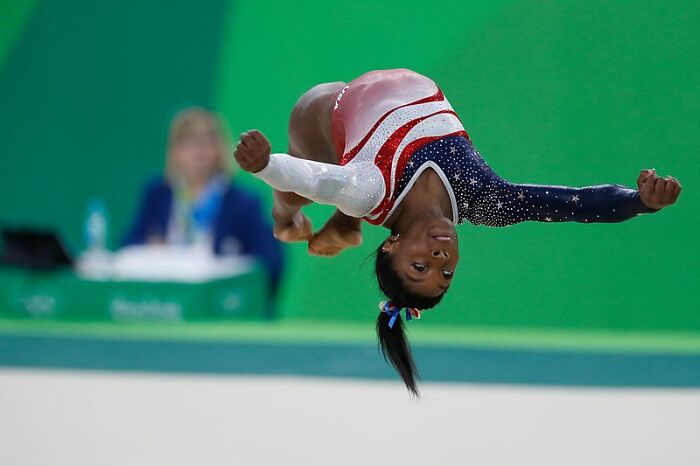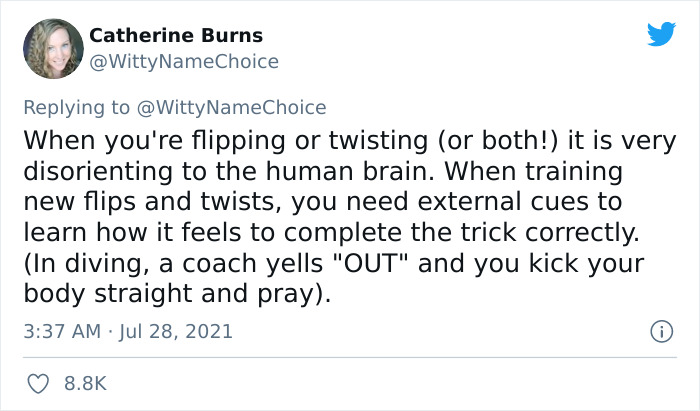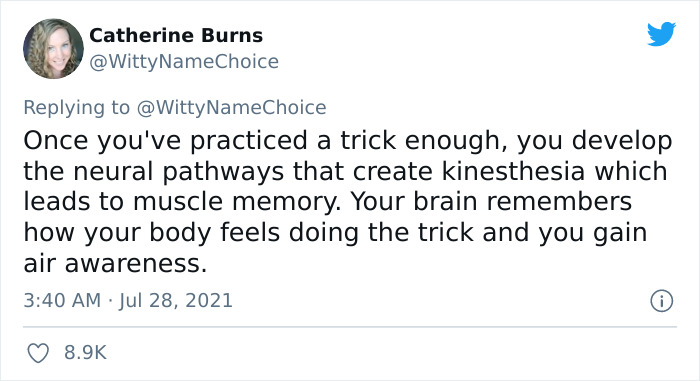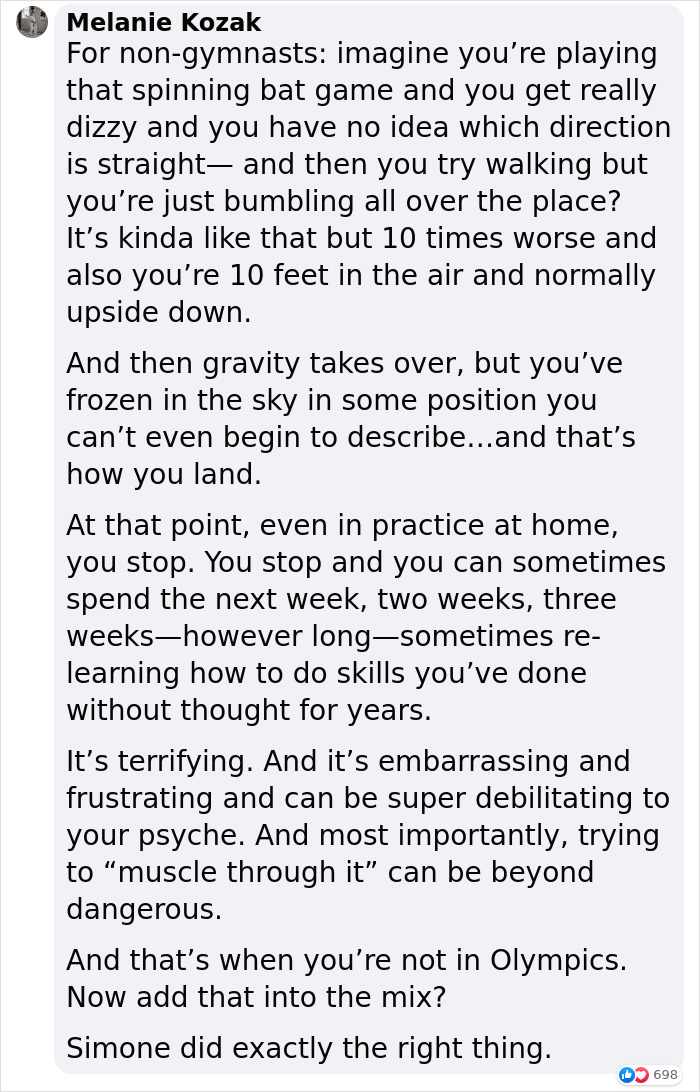Since Simone Biles quit the team final at the Tokyo Olympics, everyone has been asking the same question: “Why?”
“I had no idea where I was in the air,” Biles explained her decision. “You have to be there 100% or 120% because if you’re not, you could get hurt.”
Former gymnasts immediately recognized what she said between the lines and have taken to social media to break down a condition known as “the twisties.”
On the surface level, the twisties is a mental state where your muscle memory shuts down in the air mid-twist. It can happen to any gymnast at any time, and is even more likely under pressure.
A mental block doesn’t seem like something that could happen to arguably the best gymnast of all time, someone who routinely performs incredibly well on the biggest stages. But brains are tricky.
Image credits: wikimedia
Image credits: WittyNameChoice
Image credits: WittyNameChoice
Image credits: WittyNameChoice
Image credits: WittyNameChoice
Image credits: WittyNameChoice
Image credits: WittyNameChoice
Image credits: WittyNameChoice
Image credits: WittyNameChoice
Image credits: WittyNameChoice
Image credits: WittyNameChoice
Vault was the first event for the US and Russia in the team finals and Biles was supposed to do an Amanar — a backward flipping vault with 2.5 twists. The 24-year-old athlete has been successfully competing in the vault since she was 16. But in warmups, she bailed out of it, doing just one 1.5 twists out of a vault. In the competition, it was worse: 1.5 twists again, but with less height, forcing a deep step out of it. Biles pulled out of the rest of the team competition. Later, she also withdrew from the individual all-around competition, saying she wanted to focus on her mental health instead.
The Russian Olympic Committee won the team gold medal with 169.528 points. The U.S. claimed silver with 166.096, while Great Britain took the bronze at 164.096. The Americans won this competition in both the 2016 and 2012 Olympics.
Athletes did one heck of a job explaining the situation
Image credits: TheBatMarino
Image credits: Gymtertainment
Image credits: Dmoceanu
Image credits: Dmoceanu
Among many others, Aleah Finnegan, a gymnast on the USA national team, spoke about the subject on Twitter. “I’ve had the twisties since I was 11. I cannot imagine the fear of having it happen to you during a competition. They have very limited equipment and mats in Tokyo to help something like this get fixed let alone within a day. You have absolutely no control over your body and what it does.”
Just like other sports, gymnastics is mental and where the sport differs from many others is that if gymnasts are not in the right frame of mind to execute their dangerous skills, they will not simply run slower or strike a ball into a fence. Each complex skill comes with the risk of serious injury, and it is something they are keenly aware of each day.
Christina Myers, a former gymnast and now a gymnastics coach from Birmingham, Alabama, told BBC News that the twisties happen “when your brain and body disconnect”.
“Imagine skydiving and your parachute won’t open,” she explained. “Your body starts adding extra twists and flips to the skill you’re supposed to be doing, and it can affect even the skills that feel as routine as walking to an elite gymnast.”
“Your brain wants nothing more than to perform the intended skill correctly, but your body feels like it suddenly has a mind of its own.”
Myers added that “because the twisties are mainly psychological, the harder you try to push through, the harder the twisties push back”.
And people really appreciated their input
Image credits: poregan
Image credits: DaisyLina321
Image credits: amy_blodgett
Image credits: wh_dunbar
Image credits: ramtops
Image credits: DrCJ_Houldcroft
Image credits: dancnjen
Image credits: sdeltergo
Image credits: Rick88149986
Image credits: sam42481

































No comments:
Post a Comment